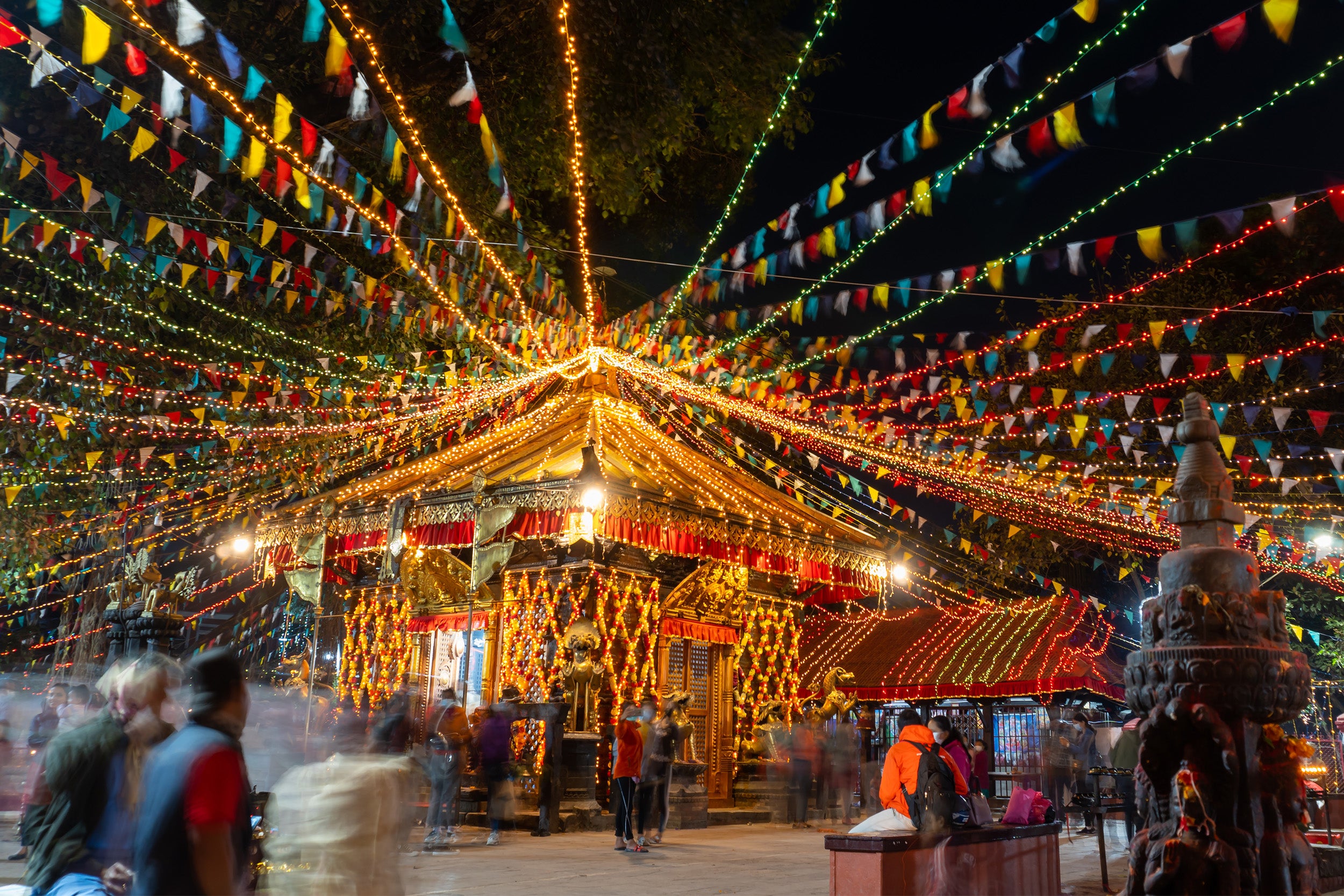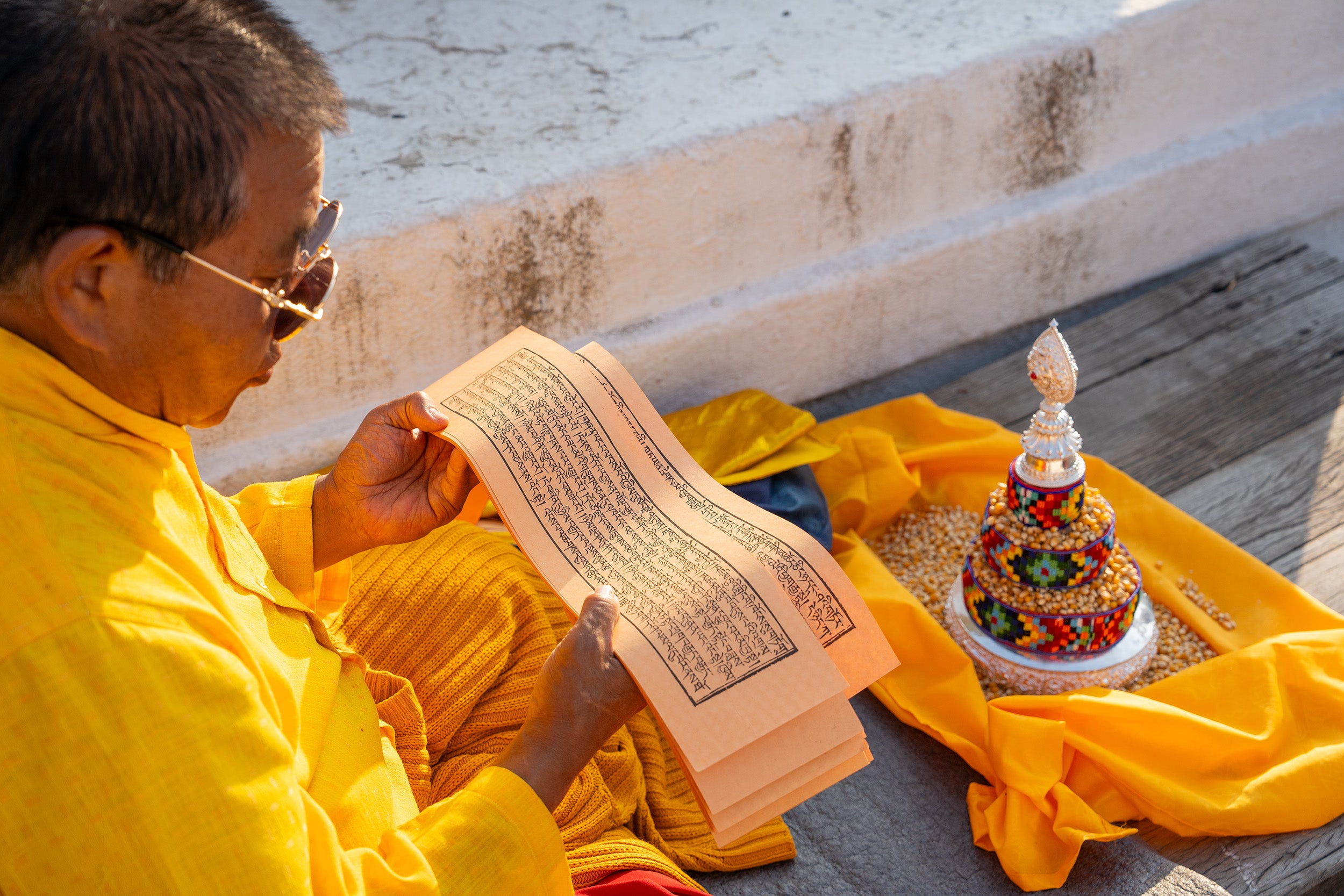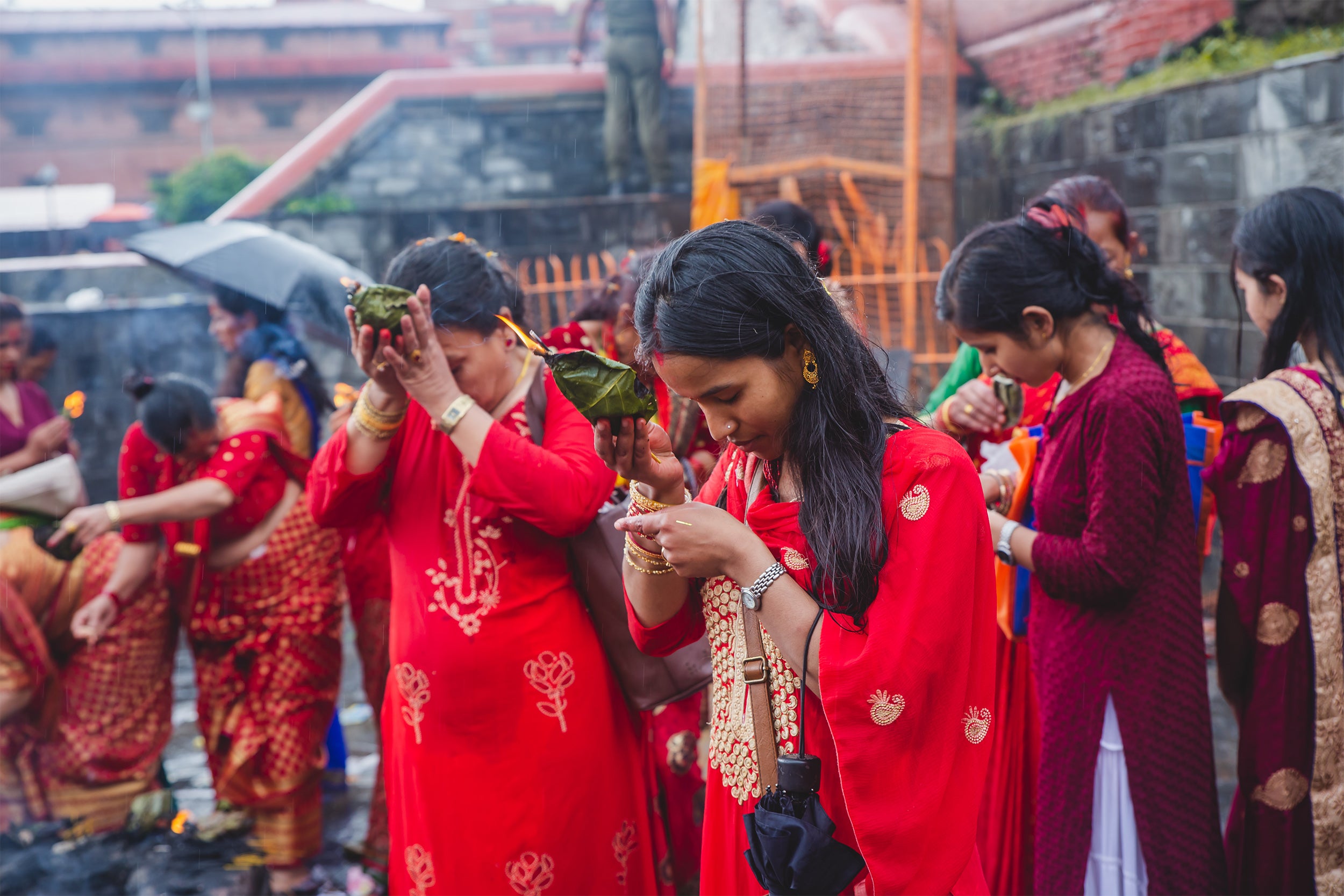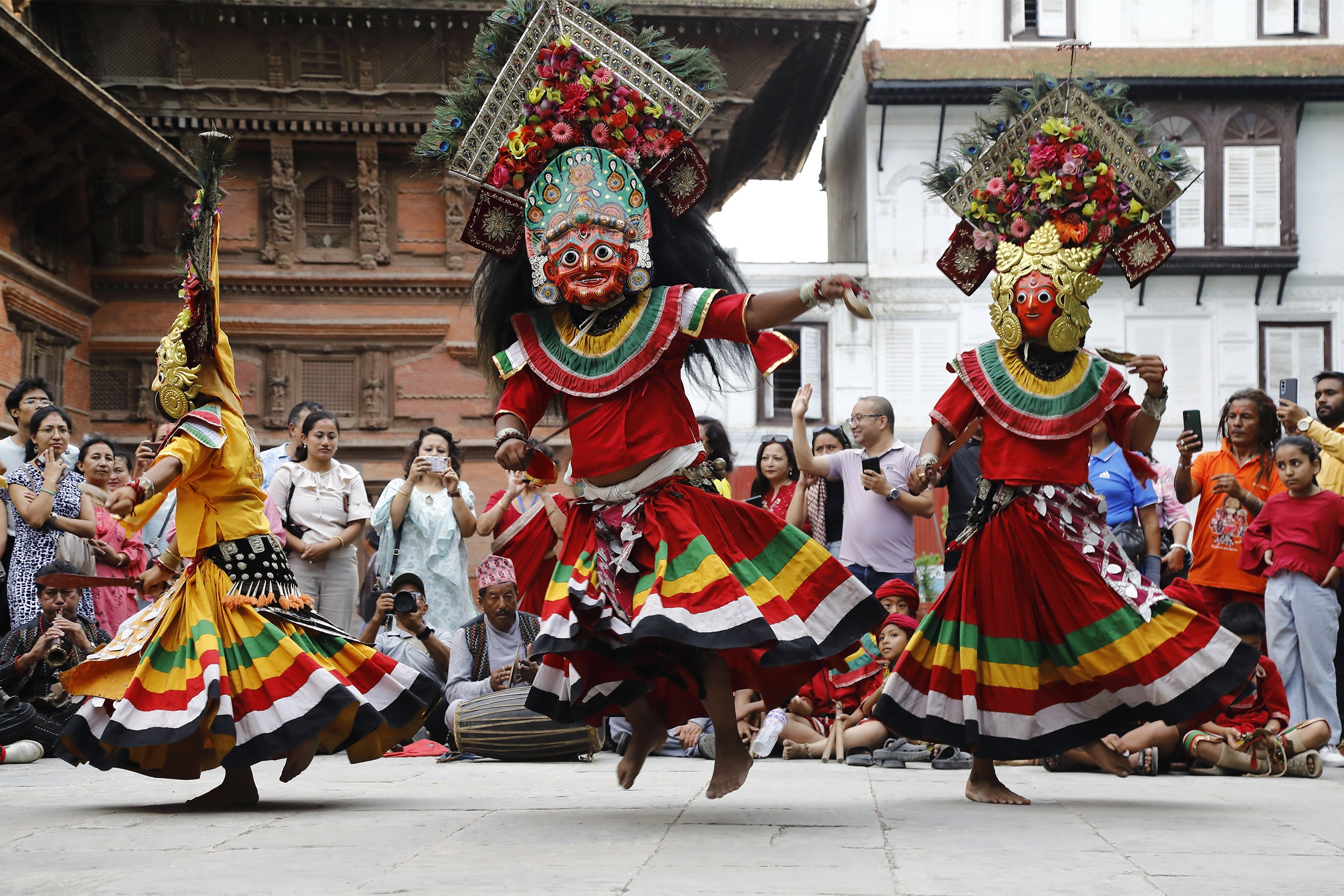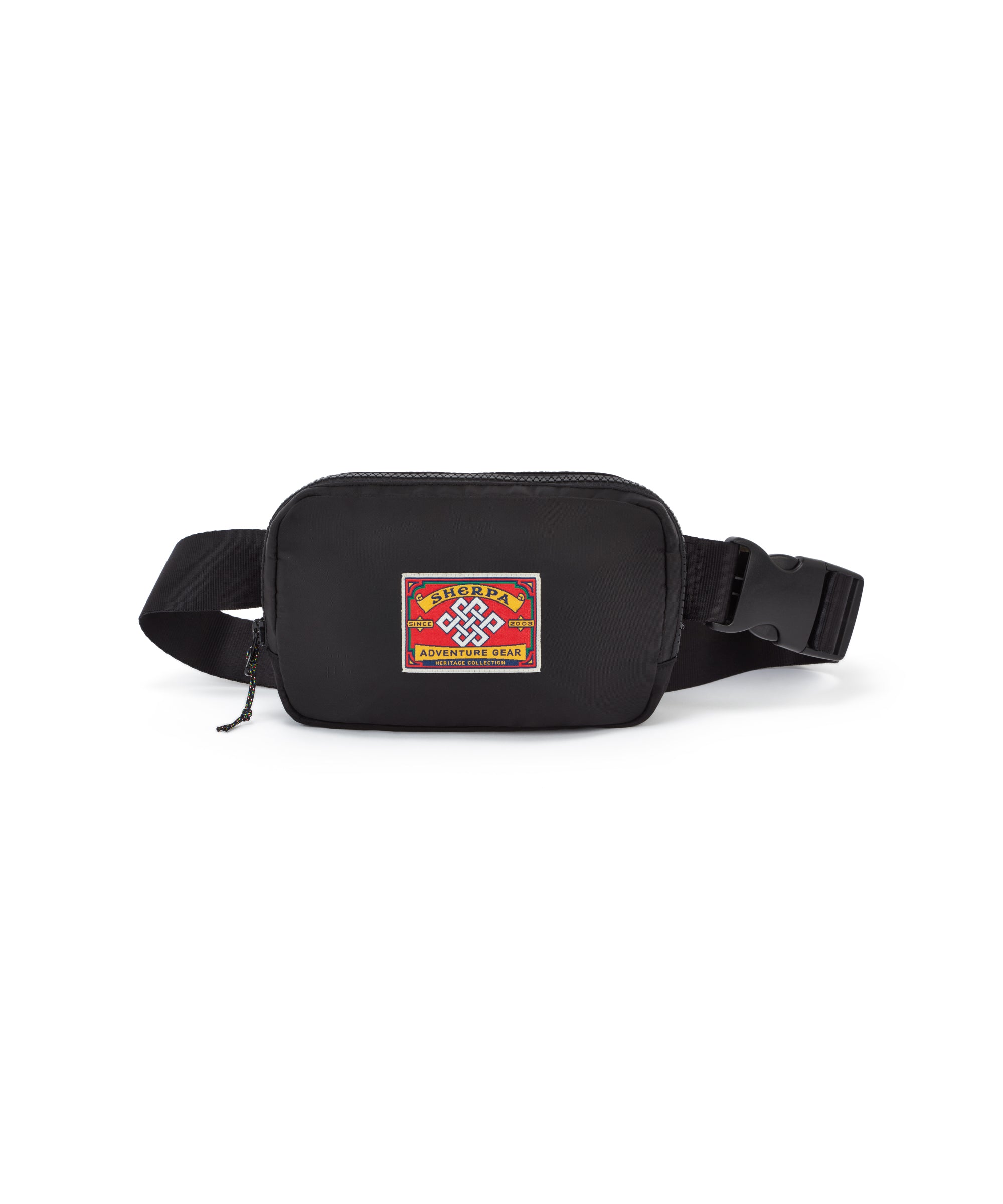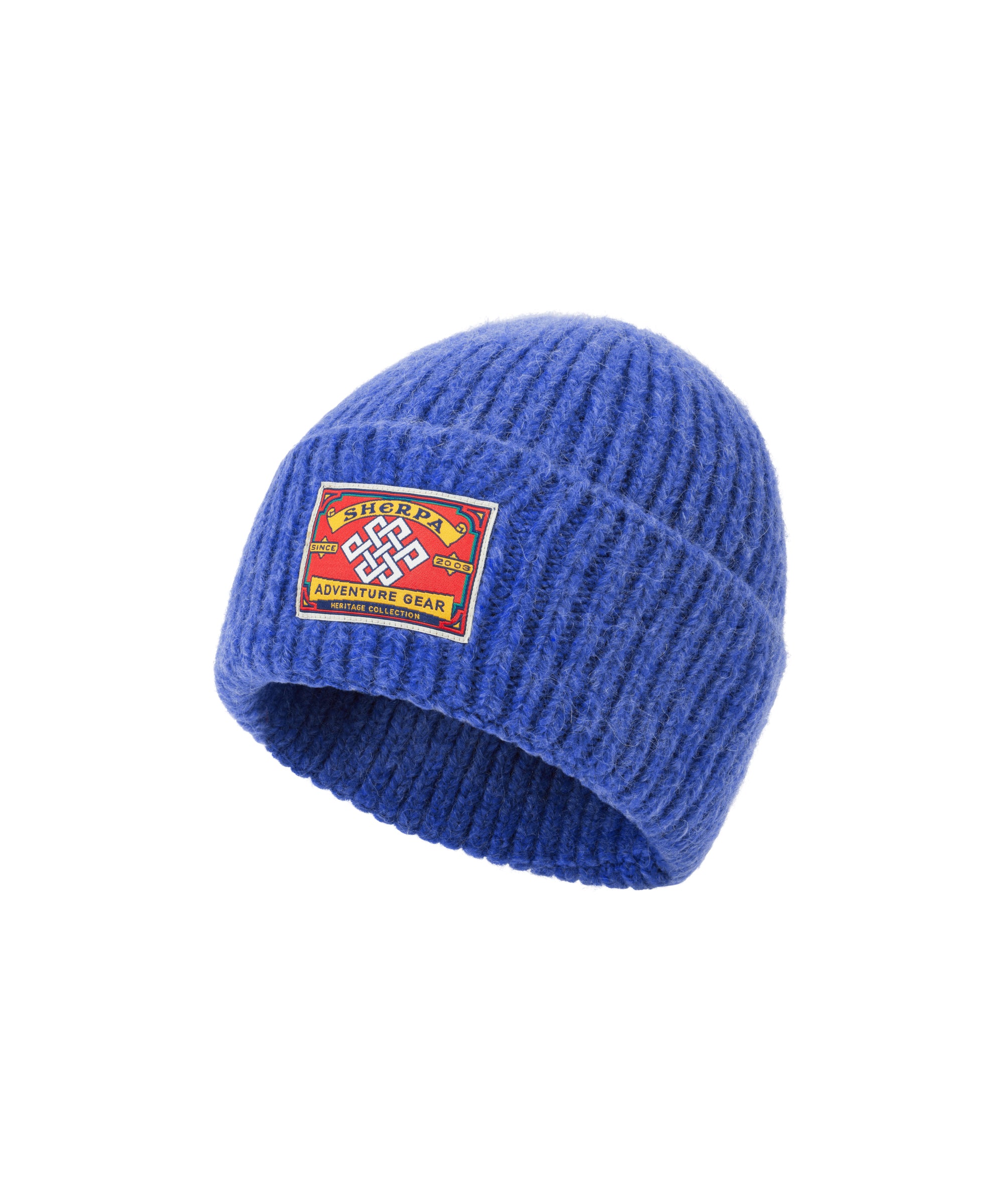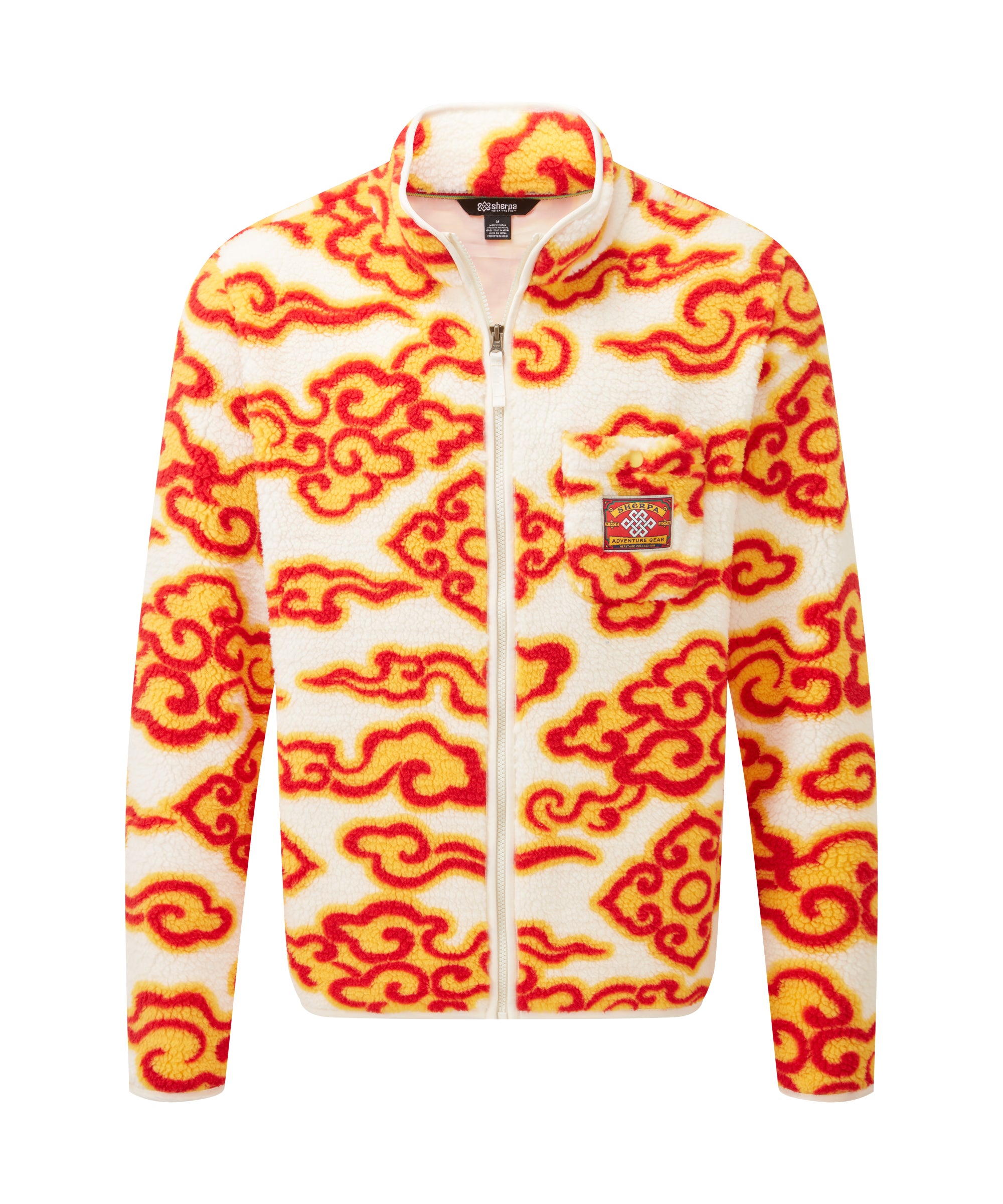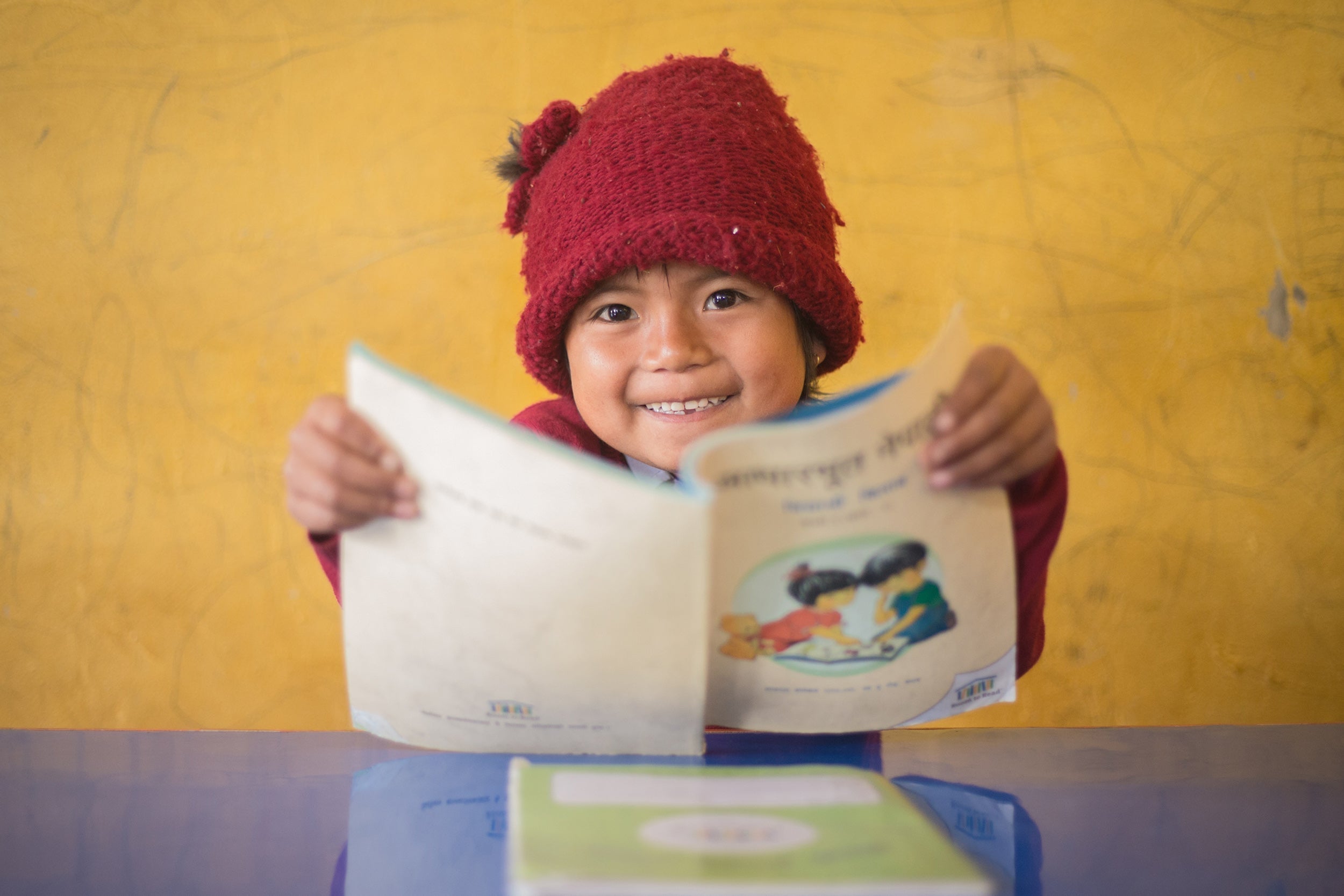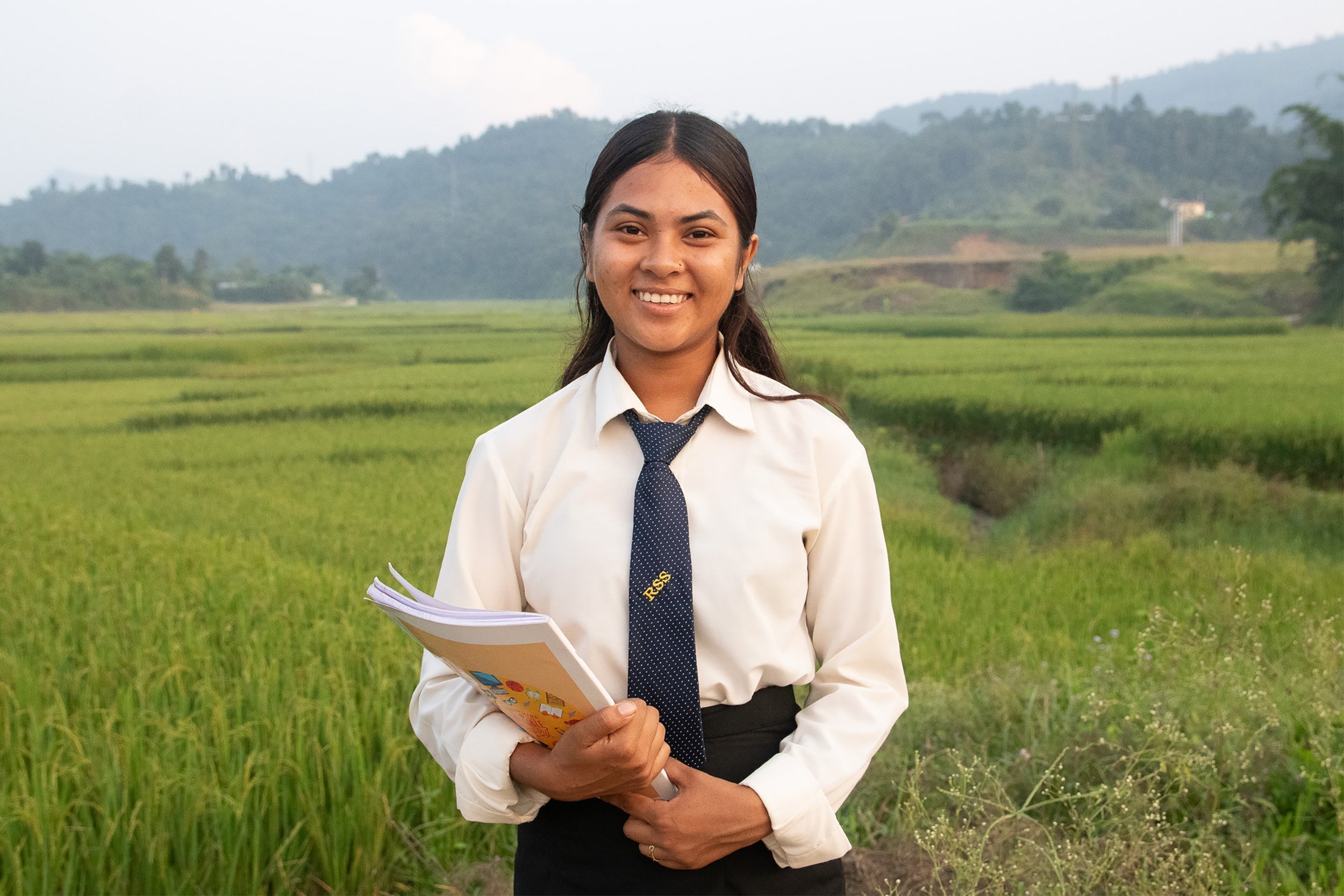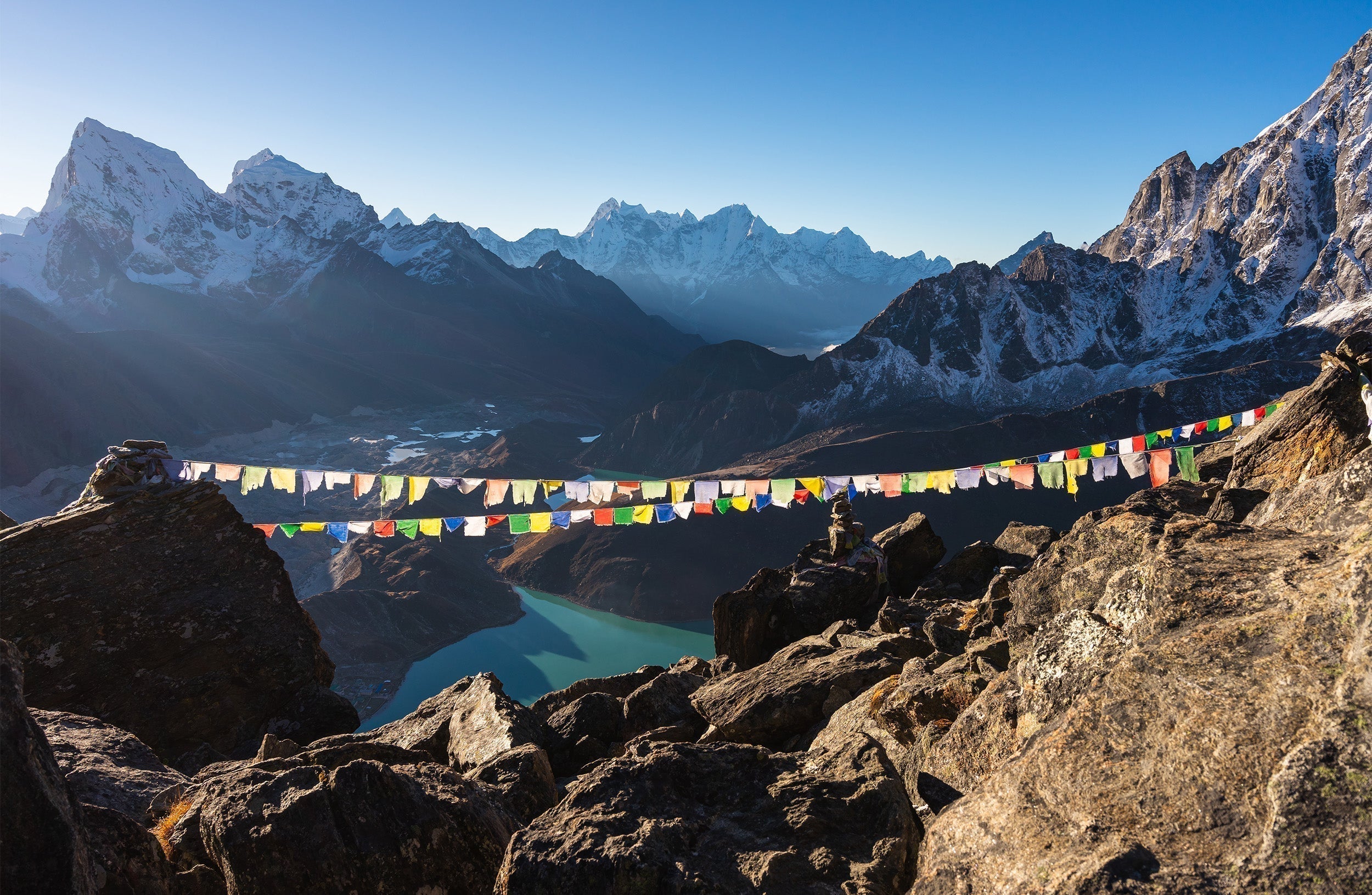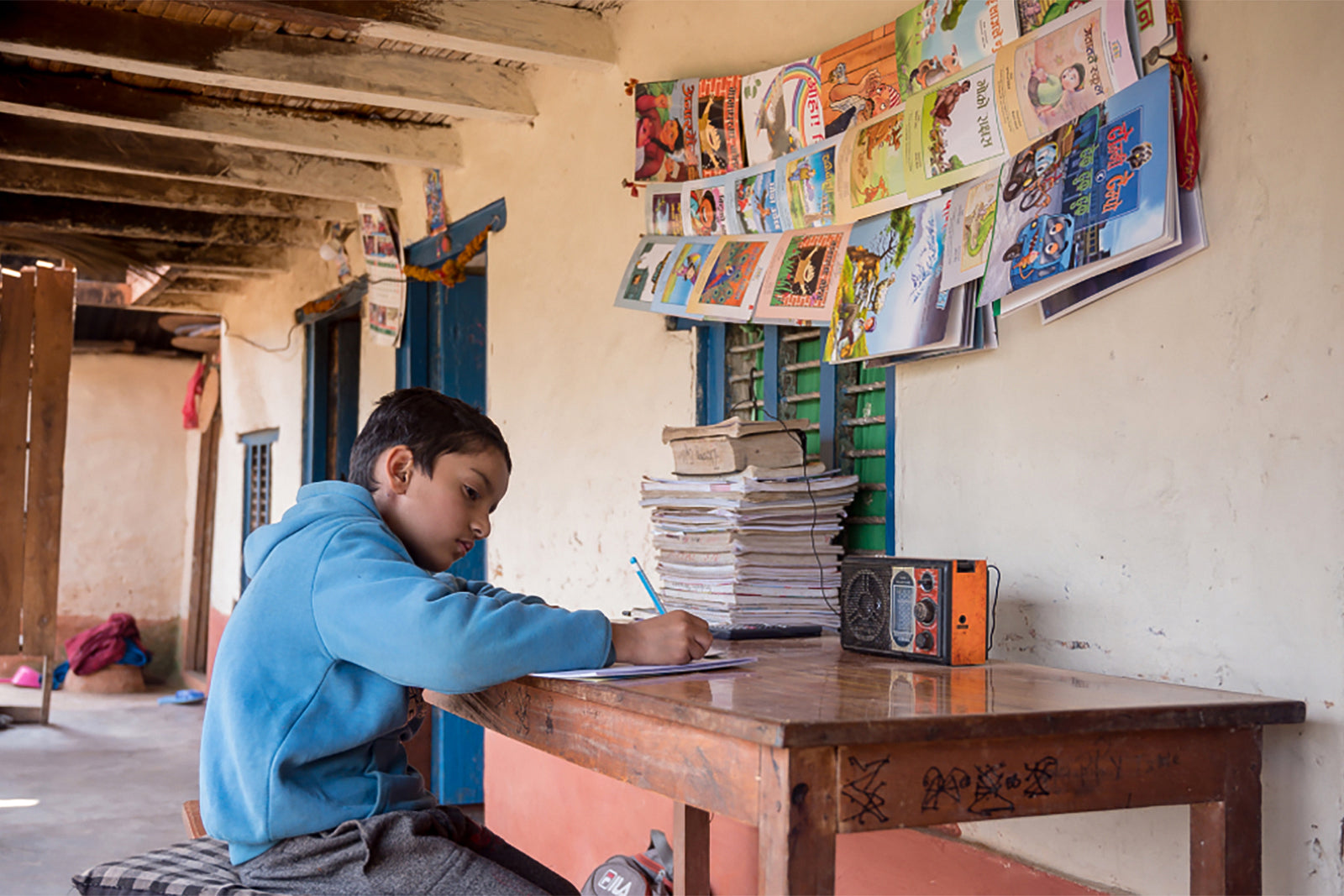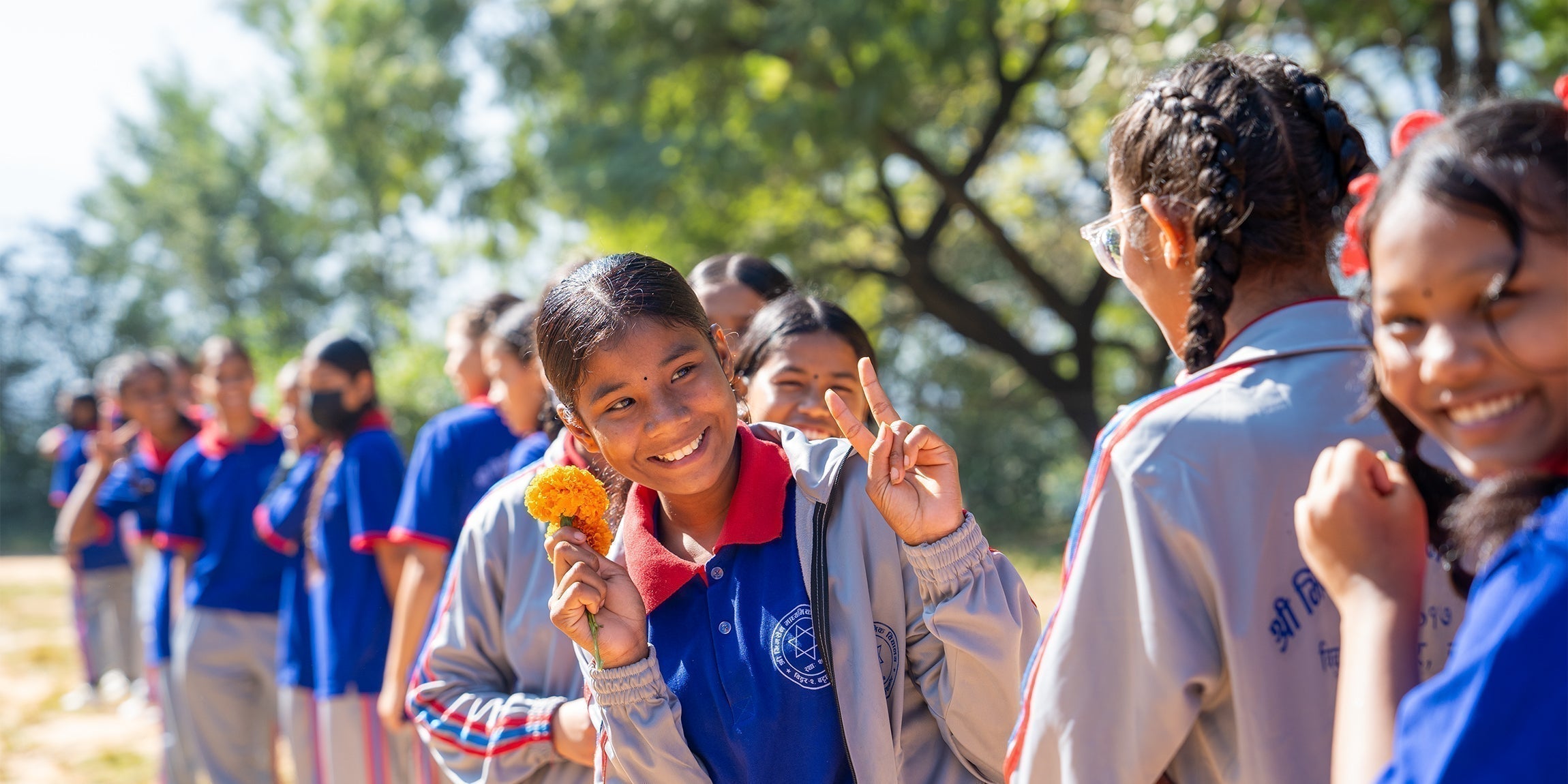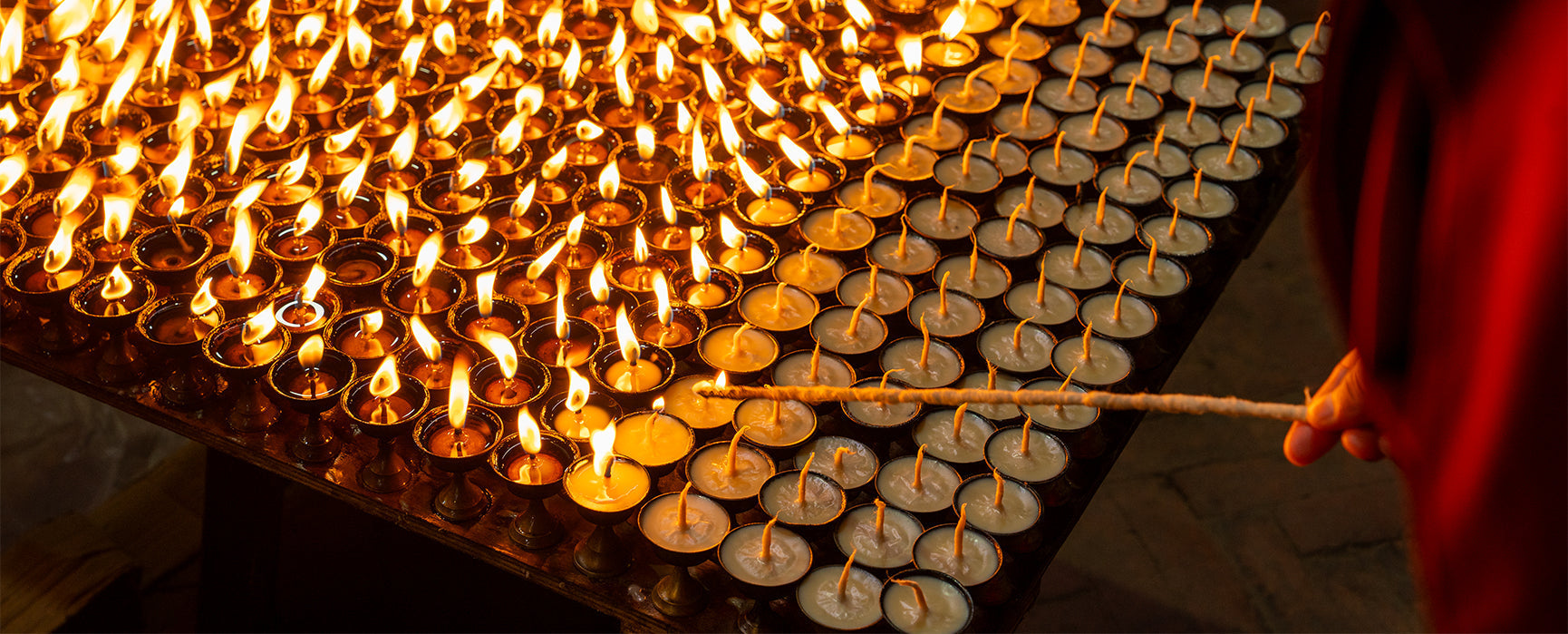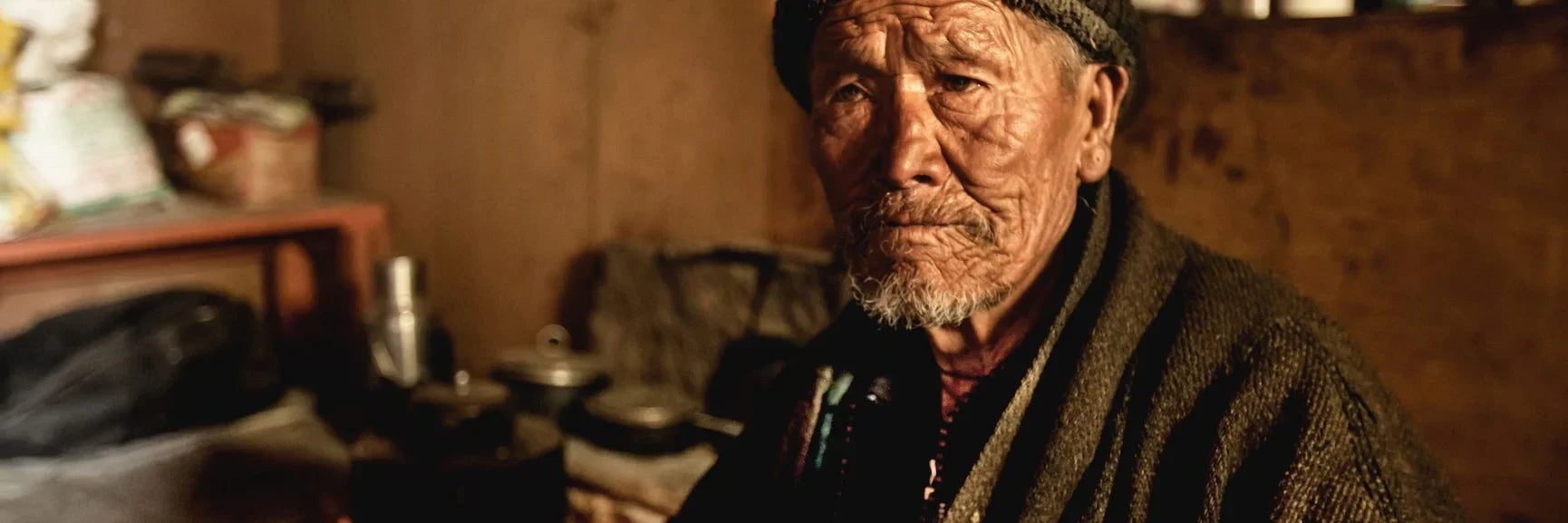
Festivals of Nepal
Nepal is a country well known for its bursts of colour, smells of incense and traditions that go back centuries. It is a country full of life, deeply rooted in generations of religion and culture celebrated throughout the year with festivals.
From bustling city streets to quiet mountain villages, festivals are an important part of life in Nepal, bringing together communities all across the country. Discover more about some of the most popular festivals that take place in Nepal.
Tihar
Sun, 19 Oct 2025 – Thu, 23 Oct 2025
Also known as Diwali or Yamapanchak, Tihar is one of the most colourful celebrations in Nepal and is known as the festival of light. The festival spans five days and honours various animals, cultural myths and strengthens the bonds of love and goodwill. Most famously, by night, houses and streets are lit up with small clay lamps.
The first day is dedicated to the crow, considered a messenger of Yama, the god of death in Hindu mythology. It is believed that offering food to crows on this day will protect their homes from negative energies. The cawing of the crow signifies the acceptance of the offerings and the blessings of Yama.
On the second day of Tihar, dogs are celebrated for their loyalty and companionship. They are decorated with flower garlands and tika on their foreheads and offered treats and special meals. In Nepal is it believed that dogs are guardians of the afterlife and that honouring them on this day ensures a safe passage for departed souls.
The third day blends two celebrations. Cows (sacred animals in Hinduism) are given colourful garlands and offered worship. They symbolise wealth, prosperity and motherhood. In the evening a celebration dedicated to the goddess of wealth and fortune named Laxmi Puja is performed. Homes are lit up with oil lamps and candles to welcome the goddess, Laxmi. Prayers, offerings and rituals are conducted to seek her blessings for prosperity, success and abundance in the coming year.
Day four is devoted to oxen. These animals are worshipped with tika, garlands and special meals to show appreciation for their support in agriculture. Day four is also associated with Govardhan Puja, which commemorates Lord Krishna’s act of lifting the Govardhan Hill to protect his fellow villages from Lord Indra’s wrathful rains. Cow dung is sculpted onto hillocks, symbolising the Govardhan Hill and worshiped.
The fifth and final day is dedicated to the bond between brothers and sisters. Sisters perform special Puja for their brothers by applying tika, giving them garlands and preparing a lavish feast. In return, brothers present gifts to their sisters and offer them blessings.
Maha Shivaratri
Sun, 15 Feb 2026
Maha Shivaratri is a Hindu festival devoted to the celebration of Lord Shiva. It is considered one of the most revered festivals in Hinduism, symbolising a time of purification, blessings and devotion. This festival falls on the 14th day of Falgun (February/March).
It is celebrated with processions, meditations, rituals and prayers. One ritual involves devotees fasting to perform the Rudra Abhishek Puja, a ritual where prayers are offered to Lord Shiva through chanting and offerings of milk, honey and sacred Bael leaves.
Gyalpo Losar
Wed, 18 Feb 2026
In the Gregorian calendar in late February or March, the people of Nepal, Tibet and some neighbouring countries begin preparations for a holiday known as Gyalpo Losar, which celebrates the start of the Tibetan new year.
The term Losar is derived from two words: Lo, meaning year, and Sar, the word for new. The festival typically lasts around 15 days, which includes the preparation time and the main three days of celebration.
The main customs associated with this festival are of cleaning and decorating the home with auspicious symbols, preparing special food, traditional dance and music as well as participation in rituals and visiting monasteries.
For more information, read our Gyalpo Losar blog here.
Holi
Wed, 4 Mar 2026
Known as the festival of colours, Holi is one of the liveliest festivals in Nepal. It celebrates the ancient story of Holika’s defeat in fire, whilst the festival also has significance in the divine love between Radha and Krishna – a symbol of love in Nepal. Holi also symbolises the onset of the spring season, representing the victory of life over cold and dark winters.
The celebration of Holi involves gathering in specific areas like Durbar square in Kathmandu and throwing water and colourful powders like vermillion. Music programmes are organised in different localities, and at the end of the day, rituals are performed such as taking the ‘chir’ - a bamboo pole adorned with colourful strips of cloth - and immersing it in a river, marking the end of the Holi festival.
Buddha Jayanti
Fri, 1 May 2026
Buddha Jayanti is known as Buddha’s birthday and is celebrated on the full moon day in the month of Baishakh (April or May). Buddha Jayanti commemorates the birth, enlightenment (Nirvana) and death (Parinirvana) of Gautam Buddha and is observed as a day for reflection on the core principles of Buddhism and celebrates the chance to spread messages of compassion and wisdom.
Devotees gather across Nepal in the early morning to worship and walk all the way around shrines, stupas and monuments. Offerings of butter lamps, rice, flowers or coins are given, and Kheer, a traditional sweet pudding is eaten on this day.
Haritalika Teej
Tue, 26 Aug 2025 – Thu, 28 Aug 2026
Haritalika Teej, also known as Teej, is a 3-day festival celebrated by Hindu women. Teej commemorates the union between Goddess Parvati (also known as Teej Mata) and Lord Shiva, with particular emphasis on Teej Mata’s devotion and love towards Lord Shiva. This celebration is observed in the month Bhadra and marks the end of the wet season, which falls in the Gregorian calendar from the end of August to the end of September.
Traditionally women wear red and green and observe different rituals across the three days such as fasting, offerings of fruits and flowers, traditional dances, bathing in a holy river, food, prayers and music.
The festival celebrates marital bliss, the wellbeing of the family and the purification of body and soul.
Gai Jatra
Sat, 29 Aug 2026
Gai Jatra, also known as Sa Paru in the Newari language, is predominantly celebrated in the Kathmandu valley and honours the people who have died that year. The festival is also known as the festival of the cow and is celebrated on the first day of the waning moon in the month Bhadra (August/September).
This festivals’ roots are found in Hindu traditions, and it has become a colourful celebration of life. There are processions through the streets, usually accompanied by music and dancing. The cow is an important symbol in this festival and those who have lost someone in the preceding year will adorn a cow and walk it through the street in remembrance of those who have been lost.
Indra Jatra
Sat, 6 September 2026
Indra Jatra is a festival lasting 8 days held in the Kathmandu Valey in the Nepali Bhadra month (August/September). It is considered to be one of the most revered festivals of the Newar community – the largest indigenous group of the Kathmandu valley. It begins with a pole-raising ceremony in front of the old Hanuman Dhoka Palace in Kathmandu.
Following this ceremony, the chariot of Kumari (the living goddess) is taken in procession through the major streets of Kathmandu.
Oil lamps are lit and lakhey (masked dancers) dance through the streets alongside drummers for each of the 8 nights. Rituals, chants and prayers are performed, and the festival ends with the lowering of the pole.
Dashain
Date: Mon, 22 Sept 2026 – Wed, 1 Oct 2026
The Dashain festival, known as the great harvest festival, is a time where families reunite and gifts of blessings are exchanged. The goddess Durga is worshipped during the 15 day festival that symbolises the victory of good over evil, where she defeated demon Mahishasura.
The first nine days of the festival symbolise the battle that took place between Durga and Mahishasura, with the tenth day being the day that Mahishasura was finally defeated.
The first day is marked by sowing Jamara, a long yellow sacred grass. Once the seeds are planted, they need to be watered daily by the eldest family member, this process continues for seven days.
On the seventh day, known as Fulpati (meaning ‘flower leaves’), devotees begin to clean and decorate their homes with flowers, fairy lights and banners.
The ninth day is the peak of ceremonies and rituals and devotees visit the temples of Kali and Durga to worship the goddesses.
On the tenth day of the festival, a mixture made up of rice, yogurt and vermilion powder is prepared. This mixture is known as tika. Elders put the tika and the Jamara on the foreheads of younger relatives as a blessing of abundance for the coming years. Elders also give ‘Dakshina’, a small amount of money, to the younger relatives that they bless.
The fiftieth and last day of the festival is called Kojagrat which means “who is awake”. This day always falls on a full moon. There is a well known myth that if you stay awake all night on this night, the goddess of wealth, Laxmi, will give you riches.
Honoring Nepal
Sherpa festivals are more than celebrations - they are living traditions that honor nature, community, and spirit. As we share the beauty and meaning of these sacred days, we also pay tribute to the country that inspires them. Our new Tarcho collection, is a celebration of Nepal’s rich cultural soul - a way to carry its joy, resilience, and reverence into everyday life.
